The last Grumman classic Piston engine Fighter
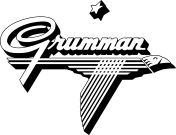
Development and design
The F8F was conceived to be capable of operating from aircraft carriers of all sizes and to be used primarily as an intercept fighter, a task that required excellent maneuverability, good low-altitude performance and high rate of climb. In order for the two XF8F-1 prototypes ordered on November 27, 1943 to have these characteristics, Grumman adopted the bulky Pratt & Whitney R-2800 engine, which had already been used to power the Grumman F6F Hellcat and Grumman F7F Tigercat, although putting special care that the weapons, armor and amount of fuel required could be housed in a cell as small and light as possible.
⚠ Note: This post is in writing. Completion expected in 2024.
❯❯❯❯❯❯❯❯❯❯❯
The XF8F-1, which made its maiden flight on August 21, 1944, was not only smaller than the excellent (F6F Hellcat) of the US Navy, but also the Bearcat was 20% lighter and could climb 30 % faster and travel at a speed 80 km/h higher. On the other hand, in addition to exceeding official requirements, the Grumman model began to be delivered in its serial version in February 1945, just six months after the first flight of the prototype. Compared to the Vought F4U Corsair, the F8F -1 was marginally slower, but possessed better maneuverability and higher rate of climb.
The initial F8F-1 was a cantilever low-wing monoplane of all-metal construction; the wings folded by about two-thirds of their span for easy storage on board. Its massive 4-blade propeller required long landing gear, a feature that gave the Bearcat its renowned high-nose profile. Also, for the first time in the production of a fighter for the US Navy, a bubble-shaped cockpit allowed the pilot 360º visibility.
Production
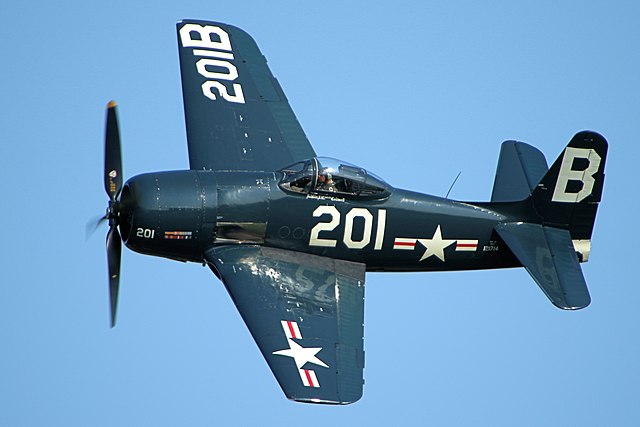
Shortly after the prototype testing program began in 1944, the US Navy placed an order for 2,023 production F8F-1s, the first of which was delivered to the Navy’s VF-19 squadron on May 21, 1945. This squadron, as well as the other first units to receive the Bearcat, was still in the process of adapting to the new fighter when World War II ended. This meant a reduction of 1,258 aircraft from the total previously ordered from Grumman and the definitive cancellation of an additional 1,876 F8M-1s, whose manufacture had been entrusted to General Motors.
When production ended in May 1949, Grumman had built a total of 1,266 Bearcats. Of these, 765 belonged to the F8F-1 version, 100 to the F8F-1B, which was characterized by having replaced the 12.7 mm machine guns with 20 mm cannons, and 36 to the F8F-1N version, equipped as fighters. nocturnal. Another 293 were F8F-2s, fitted with a redesigned engine cowling, taller fin and rudder, some other detail changes, and the 20mm guns as definitive armament; 12 were F8F-2N night fighters and 60 were F8F-2P photo-reconnaissance aircraft, armed with just two 20mm cannons. In the years after the war, some aircraft were modified for use as target controllers, receiving the new designations F8F-1D and F8F-2D.
At the time production ceased, the Bearcat was in service with some 24 US Navy squadrons, but by the fall of 1952 all of them had been retired to second line units. Some, with a modified fuel system, were delivered to the French Armée de l’Air for use in the Indochina War, under the designation F8F-1D. Another 100 similar F8F-1Ds and twenty-nine F8F-1Bs were also supplied to the Thai Air Force.
Many features of the Bearcat’s design were inspired by a Focke-Wulf Fw 190 fighter that had been captured and turned over to Grumman for study. The main missions of the F8Fs were to establish superiority over the highly maneuverable Japanese A6M-5 Zero fighter and to defend the fleet against suicide (kamikaze) attacks carried out by Japanese pilots.
In service
In the month of November 1943, the US Navy ordered Grumman to manufacture several prototypes of the F8F. The first of these flew on August 21, 1944, just 9 months later. In February 1945 the first Grumman F8F rolled off the assembly lines and on May 21 of that year the first Bearcat squadron was declared operational. However, World War II ended without the aircraft being able to show its extraordinary qualities in combat. During the postwar period, the F8F became one of the main fighters of the United States Navy, equipping a total of 24 fighter squadrons. It is usually rated as one of the best piston-powered fighters built in America.
During the postwar period, the F8F became one of the main fighters of the United States Navy, equipping a total of 24 fighter squadrons. It is usually rated as one of the best piston-powered fighters ever built in the United States, although perhaps clearly outclassed by fighters like the German Ta 152H and C, but this was certainly the best piston-powered fighter ever produced. Its ability for aerobatics was born because the US Navy chose the Bearcat to be part of its elite Blue Angels aerobatic group from 1946 to 1950 (the year the team was temporarily disbanded due to the Korean War). In the 1950s, the Bearcat was replaced by the better performing Grumman F9F Panther and McDonnell F2H Banshee jet fighters.
In 1946 an unmodified F8F-1 set a climb record (after a takeoff run of just 30 meters) of 3,000 meters in 94 seconds. The Bearcat held that record for 10 years until it was surpassed by a jet fighter (although these couldn’t beat the Bearcat’s short take-off run).
Some F8Fs were transferred to France and many of these aircraft took part, in the early 1950s, as fighter-bombers in the Indochina War.
A small number of F8Fs survived:

- 11 are airworthy
- 8 are restored and on static display
- 12 are being restored or are planned to be restored
Bearcats have been popular in air racing. A Bill Stead-sponsored Bearcat won the first Reno Air Race in 1964 while a heavily modified F8F nicknamed Rare Bear (owned by Lyle Shelton) dominated that event for decades, even when challenged by Daryl Greenmyer’s Bearcat. another famous contender with numerous wins and many speed records. The Rare Bear managed to break many records, including the 3 km World Speed Record for piston-powered aircraft (850.26 km/h in 1989) and the new climb record (3,000 meters in 91.9 s, in 1972, breaking the 1946 record cited above).
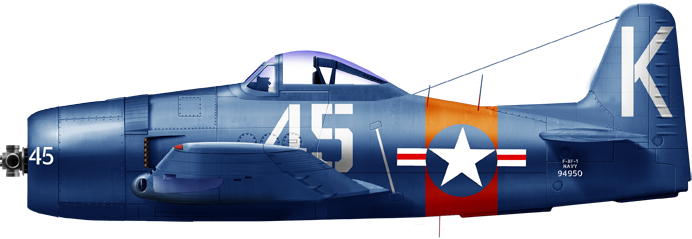
Photos
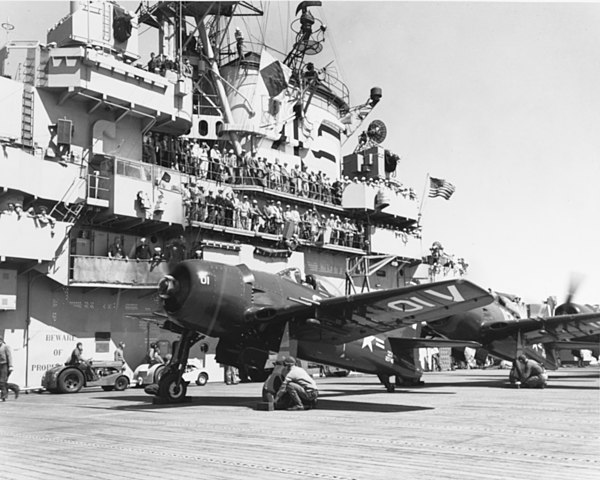
On USS Valley Forge Sept. 1949
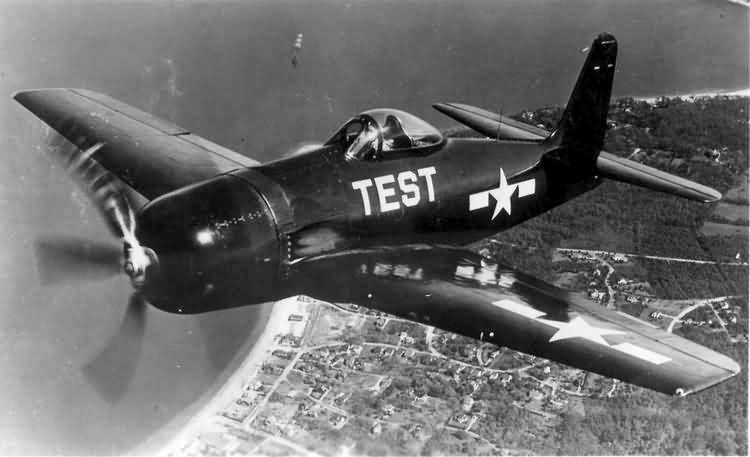
Test Plane 1943
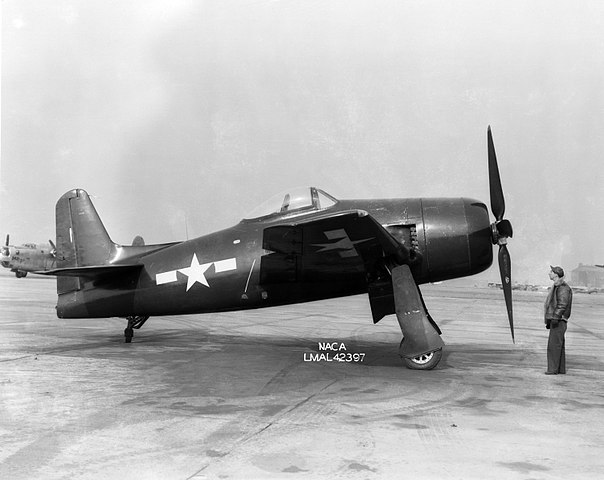
XF8F-1 Bearcat in 1945
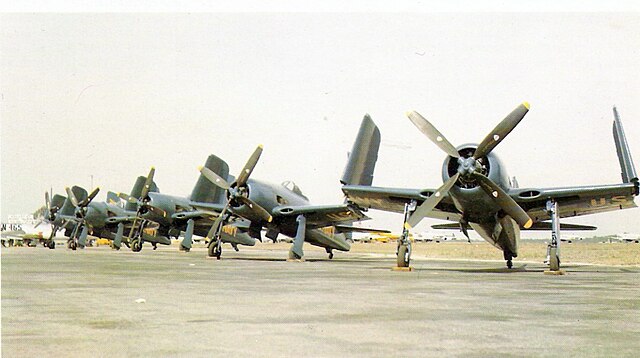
Blue angels Bearcats
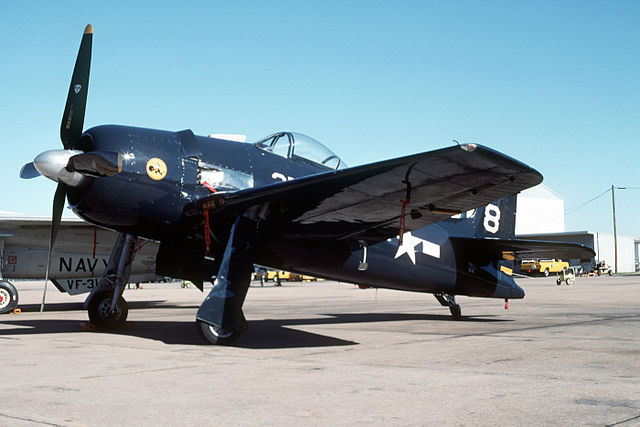
F8F Bearcat VF-31
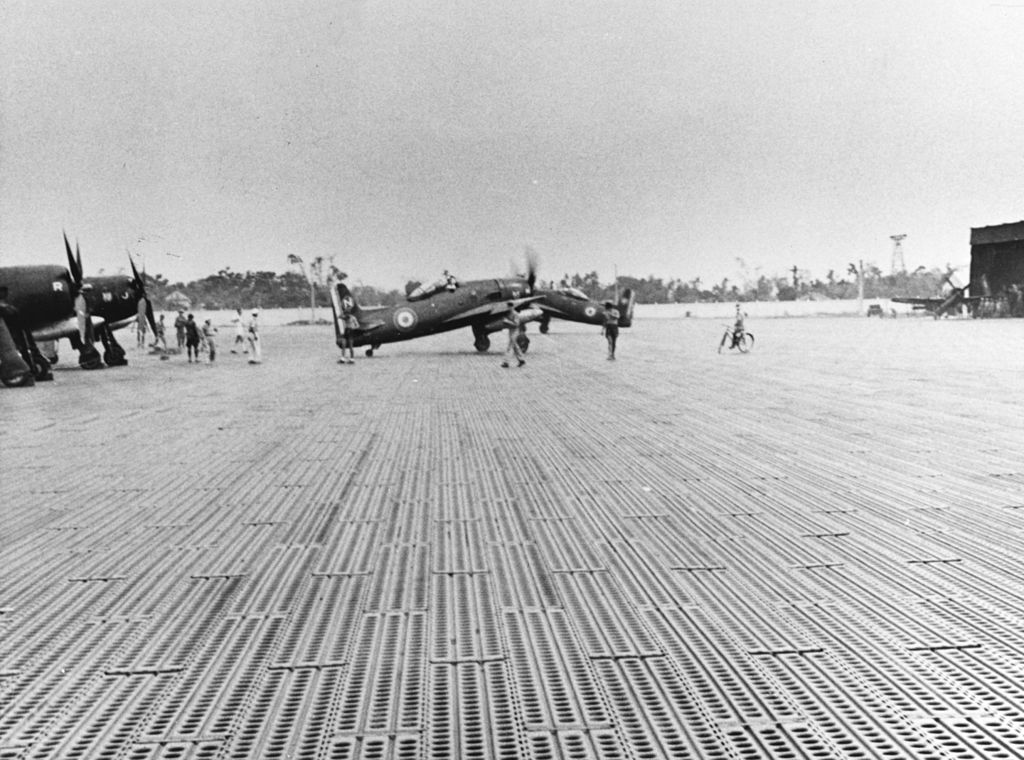
French Bearcats at Tourane AB Indochina 1954
Src/Read more about the Grumman F8F:
-To come
Videos:
Grumman F8F Bearcat US Navy Superprop – Greg’s Airplanes and Automobiles
The Models Corner:
-To come

 Latest Facebook Entry -
Latest Facebook Entry -  X(Tweeter) Naval Encyclopedia's deck archive
X(Tweeter) Naval Encyclopedia's deck archive Instagram (@navalencyc)
Instagram (@navalencyc)





 French Navy
French Navy Royal Navy
Royal Navy Russian Navy
Russian Navy Armada Espanola
Armada Espanola Austrian Navy
Austrian Navy K.u.K. Kriegsmarine
K.u.K. Kriegsmarine Dansk Marine
Dansk Marine Nautiko Hellenon
Nautiko Hellenon Koninklije Marine 1870
Koninklije Marine 1870 Marinha do Brasil
Marinha do Brasil Osmanlı Donanması
Osmanlı Donanması Marina Do Peru
Marina Do Peru Marinha do Portugal
Marinha do Portugal Regia Marina 1870
Regia Marina 1870 Nihhon Kaigun 1870
Nihhon Kaigun 1870 Preußische Marine 1870
Preußische Marine 1870 Russkiy Flot 1870
Russkiy Flot 1870 Svenska marinen
Svenska marinen Søværnet
Søværnet Union Navy
Union Navy Confederate Navy
Confederate Navy Armada de Argentina
Armada de Argentina Imperial Chinese Navy
Imperial Chinese Navy Marinha do Portugal
Marinha do Portugal Mexico
Mexico Kaiserliche Marine
Kaiserliche Marine 1898 US Navy
1898 US Navy Sovietskiy Flot
Sovietskiy Flot Royal Canadian Navy
Royal Canadian Navy Royal Australian Navy
Royal Australian Navy RNZN Fleet
RNZN Fleet Chinese Navy 1937
Chinese Navy 1937 Kriegsmarine
Kriegsmarine Chilean Navy
Chilean Navy Danish Navy
Danish Navy Finnish Navy
Finnish Navy Hellenic Navy
Hellenic Navy Polish Navy
Polish Navy Romanian Navy
Romanian Navy Turkish Navy
Turkish Navy Royal Yugoslav Navy
Royal Yugoslav Navy Royal Thai Navy
Royal Thai Navy Minor Navies
Minor Navies Albania
Albania Austria
Austria Belgium
Belgium Columbia
Columbia Costa Rica
Costa Rica Cuba
Cuba Czechoslovakia
Czechoslovakia Dominican Republic
Dominican Republic Haiti
Haiti Hungary
Hungary Honduras
Honduras Estonia
Estonia Iceland
Iceland Eire
Eire Equador
Equador Iran
Iran Iraq
Iraq Latvia
Latvia Liberia
Liberia Lithuania
Lithuania Mandchukuo
Mandchukuo Morocco
Morocco Nicaragua
Nicaragua Persia
Persia San Salvador
San Salvador Sarawak
Sarawak Uruguay
Uruguay Venezuela
Venezuela Zanzibar
Zanzibar Warsaw Pact Navies
Warsaw Pact Navies Bulgaria
Bulgaria Hungary
Hungary

 Bundesmarine
Bundesmarine Dutch Navy
Dutch Navy Hellenic Navy
Hellenic Navy Marina Militare
Marina Militare Yugoslav Navy
Yugoslav Navy Chinese Navy
Chinese Navy Indian Navy
Indian Navy Indonesian Navy
Indonesian Navy JMSDF
JMSDF North Korean Navy
North Korean Navy Pakistani Navy
Pakistani Navy Philippines Navy
Philippines Navy ROKN
ROKN Rep. of Singapore Navy
Rep. of Singapore Navy Taiwanese Navy
Taiwanese Navy IDF Navy
IDF Navy Saudi Navy
Saudi Navy Royal New Zealand Navy
Royal New Zealand Navy Egyptian Navy
Egyptian Navy South African Navy
South African Navy






























 Ukrainian Navy
Ukrainian Navy dbodesign
dbodesign